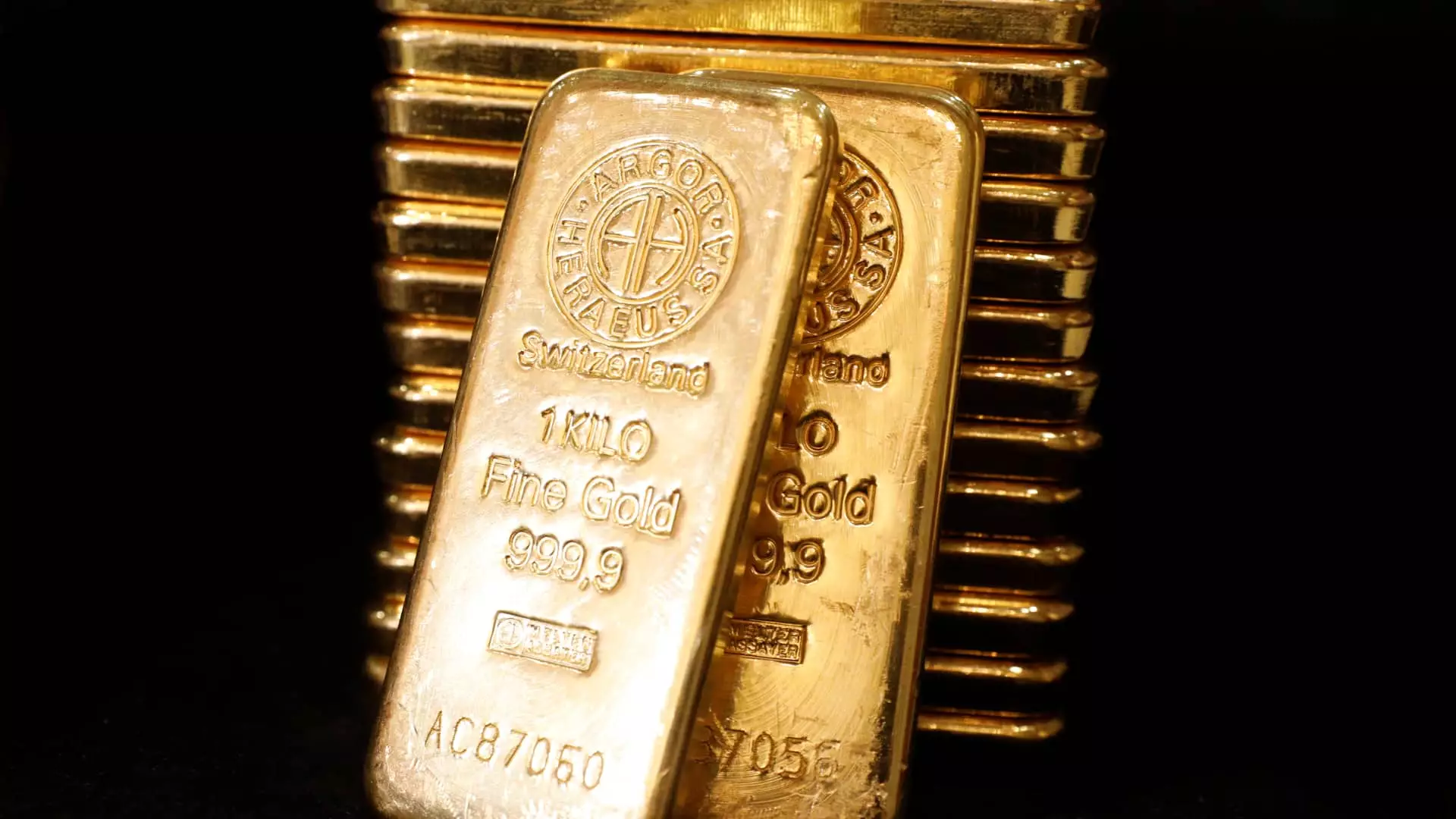The past year has been a rollercoaster ride for gold, which saw an impressive gain of approximately 35% before recently cooling off. This upswing was largely driven by a tumultuous economic landscape, marked by high inflation, rising debt, and geopolitical uncertainties. Despite the current pause, financial experts like David Schassler, head of multi-asset solutions at Van Eck, maintain a bullish outlook for gold, suggesting that its role as a hedge against uncertainty remains robust. Schassler’s remarks encapsulate a prevailing sentiment in financial circles: gold is not merely a commodity but a potential fortress of value in times of fiscal turmoil.
Market Chaos: The Driving Force Behind Gold’s Appeal
Schassler’s assertion that the U.S. faces “huge debt, huge spending, and huge chaos” resonates deeply with both investors and economists alike. His perspective underscores a critical point: the prevailing economic instability is unlikely to dissipate soon. Not only does this environment create a fertile ground for gold’s appreciation, but it also signifies a broader trend where investors are seeking out sustainable hedges against inflation and economic disarray. David Einhorn, a notable hedge fund manager, reinforces this view by indicating a bipartisan indifference towards addressing the national deficit. This scenario paints a picture of gold as a reliable refuge, especially as the future remains uncertain.
The Allure of Gold: Predictions for the Future
Both Schassler and Einhorn have made bold predictions regarding gold’s price trajectory; they anticipate that it could soar to $5,000 per ounce—in Einhorn’s case, by the year 2026. Such forecasts highlight a crucial aspect of gold investment: it is often viewed as synonymous with wealth preservation, especially when traditional financial systems falter. As economic conditions continue to rattle financial markets, the possibility of gold reaching these heights becomes increasingly plausible, positioning it as a proactive choice for investors concerned with long-term stability.
The Evolving Landscape: Bitcoin as a Companion Asset
In an intriguing twist, Schassler also casts crypto assets, particularly Bitcoin, as complementary hedges to gold. He provocatively describes Bitcoin as the “risky cousin” of gold—an assertion that brings forth a dynamic discussion around the interplay between traditional and emerging asset classes. Bitcoin’s recent performance, surging roughly 60% over the past year, further emphasizes its potential as an alternative store of value. The two can coexist, particularly in periods of economic strife, as each serves a distinct purpose in an investor’s portfolio.
Innovative Strategies: ETFs with Built-In Protections
Investment vehicles like Exchange-Traded Funds (ETFs) are increasingly adopting advanced strategies to provide investors with exposure to these asset classes while mitigating risks. Experts like Todd Rosenbluth advocate for ETFs that integrate options to cushion volatility, presenting a compelling case for investors exploring Bitcoin. An example is the Calamos Bitcoin 80 Series Structured Alt Protection ETF (CBTJ), which offers protection against significant downturns while still providing opportunities for upside potential. This innovative approach reflects a growing trend among investors who are looking to balance risk without sacrificing the possibility of significant returns.
In the ever-evolving financial landscape, both gold and Bitcoin represent powerful tools for strategic investment, particularly in light of ongoing economic challenges.

